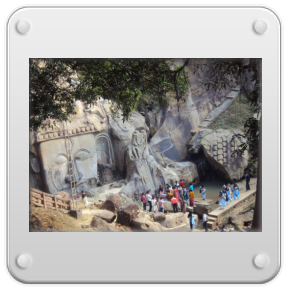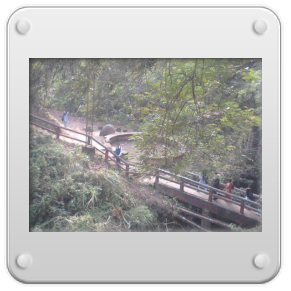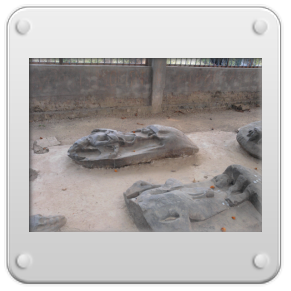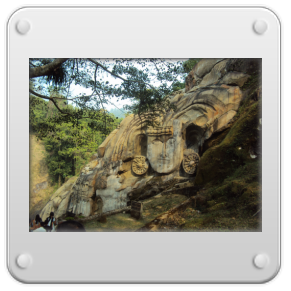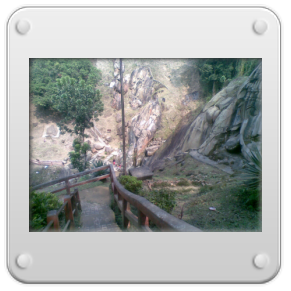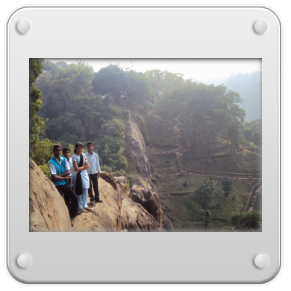UNAKOTI - DEPARTMENT OF BENGALI, Karimganj College
Main menu:
UNAKOTI
A Brief profile of Unakoti
Unakoti, the famous archaeological site of Tripura, is situated on the top of a hillock at a distance of 9 km from kailashohor and 180 Km from Agartala the capital city of Tripura. The hillock is divided by a streamlet and ruins are there on either banks on the surface of the hillock whose average height is about 150 feet.
Though within the Political boundary of the state of Tripura the region around Kailashahar is accepted as on extension of the neighbouring district of sylhet ( now in Bangladesh) Socially, Culturally and even topographically. Actually the district of sylhet is the eastern most extension of the Ganga-Padma basin and the hill range that starts from Unokoti area. This geographical location is significant in the context of the cultural trends that Unokoti remains represent.
The sculptural remains of Unakoti can broadly be divided into-(a) Rock-carvings and (b) stone images. Amongst the rock-carvings the following are important:
A colossal head: This thirty feet high human head carved on the rock-surface is popularly known as Unokotiswera Kala Bhairovi supposed to be the presiding deity of the side. Three displaced figures of bulls are lying below this figure.
In addition, their are other curved heads scattered over the hill & some of them are unfinished.
Another female figure popularly identified with the river goddess Ganga.
Three Ganesha, one in sitting & other two standing. The former is three headed the latter four standing. The former is three headed the latter four headed. They have six and eight hands respectively.
One figure with four hands generally identified with Vishnu.
Another big figure identified as Durga or Bhairabhi.
Amongst the stone images, the following are important:
a) One Trimukhalinga of which one of the faces in beareded.
b) A linga representation will full human figure.
c) A number of other Mukhalingas most notable amongst them in one Chaturmukha linga.
d) Two female figures on the two sides of unokotiswera.
However, an interesting feature of the sculptural specimens of Unakoti that the deities depicted can be catagorasied as Brahmical in broad sense, but it is difficult to bring out their exact identification. That is so because the sculptors seldom followed the scriptural instructions attaced to different perceptions of the devinities of Hindu pantheon.
Again, the Unakoti region was continuously ruled by different Hindu or Buddhist dynesties. Political stability ensured cultural consolidation and the Eastern Indian school of Art and sculpture had ample opportunity to generate new impetus which also influenced the imagination of the artists traditionally linked with the Unakoti complex. By this time the Tibeto-Burman people who lived in the region were subjected to a vigorous process of Brahmanisation. So, with a new impetus, Unakoti artists produced more articulated works where Brahmanical notions were dominated and at the same time, tribal traits were not totally lost. Hence, Hindu divinites were depicted at times in an unconventional way with amulgating the tribal notions of the Kirata artists.


